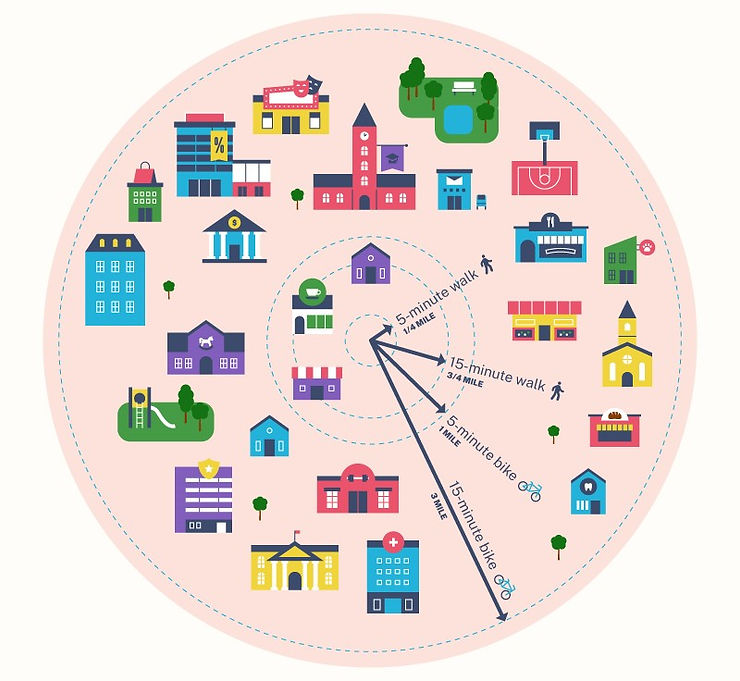15 Minute Cities: An Urban Design Concept
- Parabol

- Mar 30, 2023
- 3 min read
Hello,
In today's fast-paced world, people are looking for ways to make their daily lives easier, healthier, and more comfortable through the design of urban spaces, which are their living environments. The concept of 15-minute cities is a new urban design idea that aims to do just that.
Based on the idea that residents need to have access to basic services and amenities and be able to work within a 15-minute radius of their homes, the concept of 15-minute cities is presented to you by highlighting its outstanding features.
We wanted to convey the concept of 15 Minute Cities to you by mentioning its prominent features.
Happy reading!

Credit: MoveBuddha.com
What is a 15 Minute City?
A 15-minute city is a city planning concept that aims to create cities where all daily needs are accessible within a 15-minute walk or bike ride from home. Compact development, mixed-use zoning and public transport, green spaces, and accessibility to basic services are given priority. This concept supports sustainable, livable, and equitable urban environments by reducing dependence on cars and promoting a sense of community.
The concept is built around four essential planning principles that are essential to making daily life easier and reducing the need for long-distance travel.
Proximity: Focuses on ensuring that basic services and access to public transport are close to residents' homes. This includes supermarkets, health clinics, schools, and other essential services people need on a daily basis. The 15-minute city concept aims to make daily life more comfortable by reducing the distance between these services and people's homes and reducing the need for long-distance travel.
Diversity (Land Use and Activities): Focuses on promoting mixed-use development that includes different residential, commercial, and cultural activities within a 15-minute area to create a more diverse and inclusive environment. This helps create a more vibrant and dynamic community and reduce social inequality.
Density: Focuses on creating a population density that can support local businesses and services while promoting sustainability. The concept aims to have enough people living and working in close proximity to each other to create an economically and socially vibrant community.
Ubiquity: Focuses on making basic services accessible and affordable for everyone. This includes health, education, and other essential services needed for daily life. The 15-minute city concept aims to reduce social inequality and create a more equitable society by making these services available everywhere.
In summary, the concept of 15-minute cities is a comprehensive urban planning and community planning model proposed to redevelop our built environment from a sustainability perspective.

From Past to Present: 15 Minute Cities
The starting point of the concept developed by Carlos Moreno in 2016 can be evaluated as historical ideas about proximity and walkability, such as Clarence Perry's controversial neighborhood unit, Transit-Oriented Development, or Isobenefit Urbanism. The concept of 15-minute cities, which is a reflection of these ideas today, presents a new vision that focuses on creating more livable, sustainable, and equitable communities. By reducing the distances people need to travel for daily activities and promoting sustainable transportation, it has the potential to transform the way we live in cities.
Although the concept is still in its early stages, it is already being adopted by cities around the world and is likely to continue to increase in popularity in the coming years. Especially during the COVID-19 pandemic, which directly affects urban mobility, the concept has become popular theoretically worldwide. Paris Mayor Anne Hidalgo made the concept, which is called "Ville du quart d'heure" in French, central to city policy during her election campaign, paving the way for its implementation. Following the COVID-19 outbreak and with Paris as a leading example, it has also been implemented in Rome, Dublin, and Utrecht.
Like these examples, the concept of 15-minute cities, which is becoming increasingly widespread with many planning practices, aims to create more livable, sustainable, and equitable societies by reducing the distances people need to travel for daily activities. As a Parabol, we integrate these goals into our solutions and work towards a livable future.

Opmerkingen